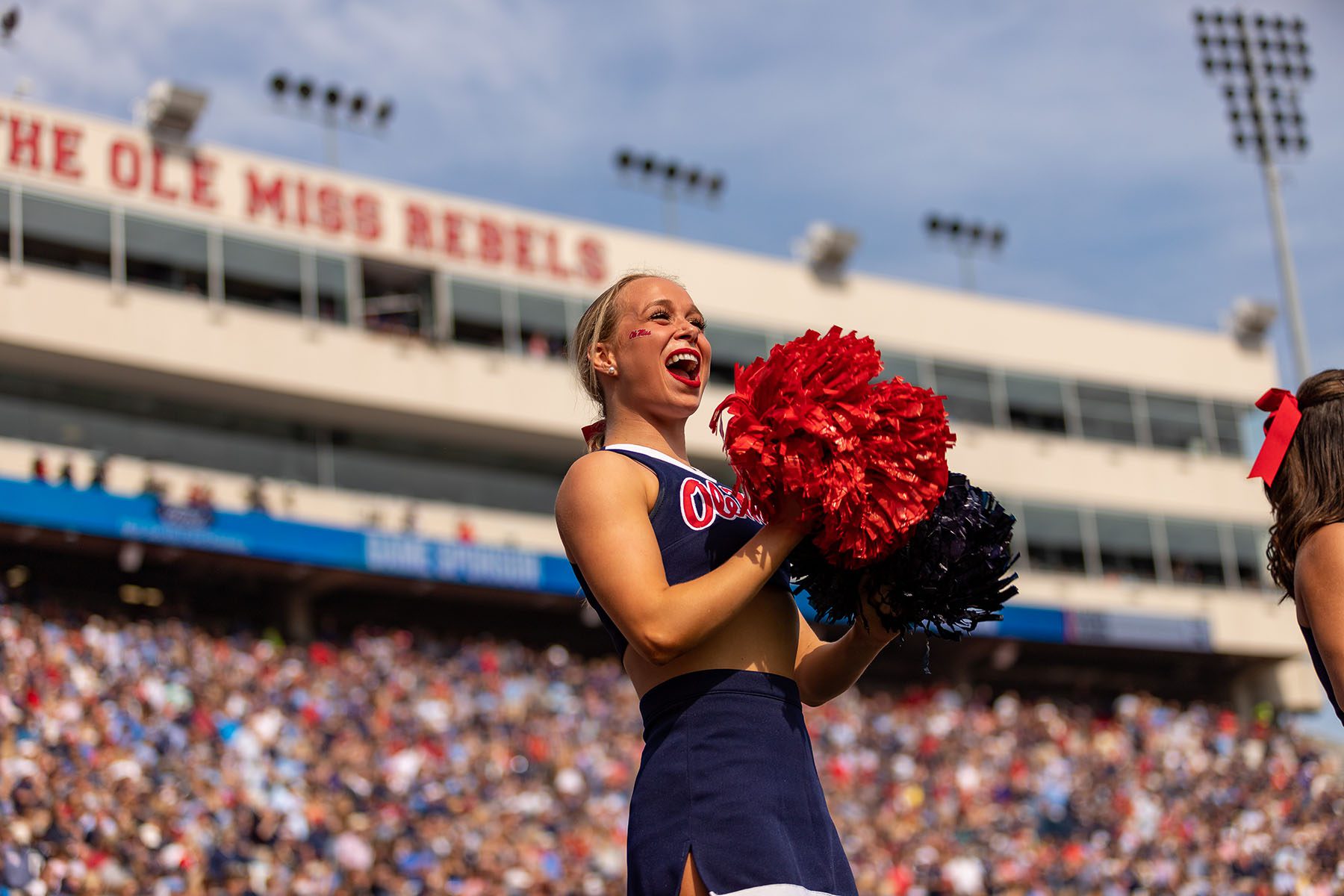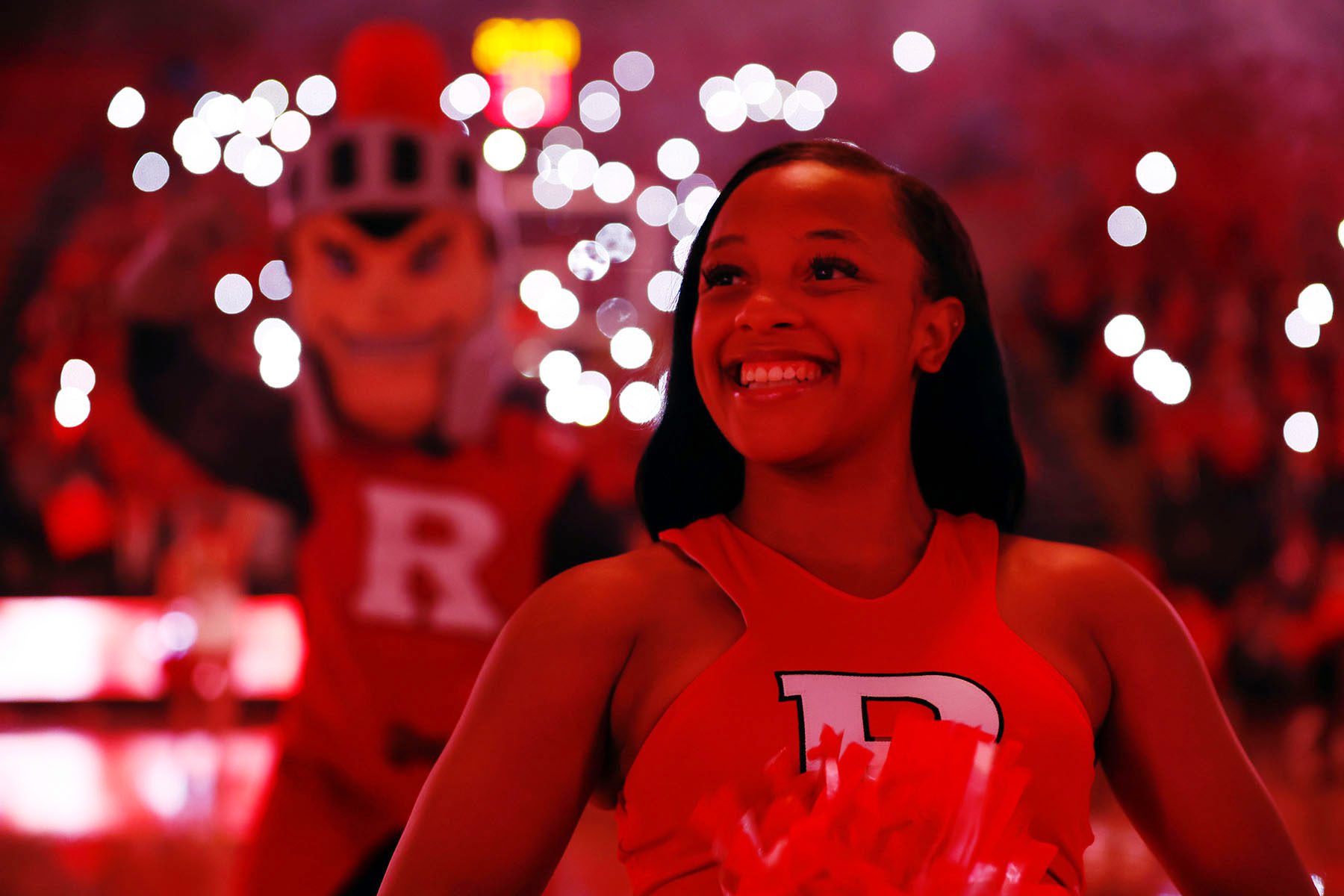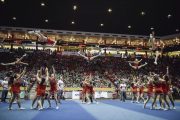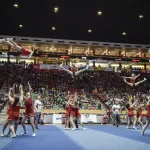We’re answering the “how” and “why” of sports news. Sign up for our daily newsletter.
Cheerleaders from across the country have descended upon Daytona, Florida, this week for the National Cheerleading Association (NCA) College Nationals. For almost the entire history of competition cheerleading, this annual event — which looms so large in the sport that it is sometimes referred to as simply “Daytona” — has represented the highest level of achievement.
But growing momentum around cheerleading becoming an Olympic sport could change Daytona’s prominence. As teams take the bandshell, leaders in the sport are thinking about how recent moves to push cheer toward Olympic podiums could benefit cheerleaders, who have few professional options after college.
Cheerleading — dominated by women — is an outlier among other college sports. It is not regulated by the National Collegiate Athletics Association (NCAA), the college athletics governing body. A 1975 decision by the Department of Education’s Office of Civil Rights specified that cheerleading was an extracurricular activity, which meant that it could not be included in college and university headcounts under Title IX, which dictates that schools must provide equal opportunity for women’s sports. This decision was affirmed by a 2010 ruling by a federal judge that cheerleading does not “count” as a sport under Title IX, meaning that the athletes who compete in cheer programs at higher education institutions typically do so outside of the NCAA.
And because cheer exists outside of an NCAA-regulated competition system, competitive college cheerleaders have one marquee event they strive toward: the NCA College Nationals, a competition run by the privately-held company Varsity Spirit.
But maybe not for long.
The International Olympic Committee (IOC) recognized cheerleading as a sport in July 2021 — a first, critically important step to becoming an Olympic sport. Being granted recognition from the IOC was the result of over 20 years of work by Jeff Webb and the International Cheer Union (ICU), the worldwide governing body for cheerleading he launched in 2004. Webb, the former head of Varsity Spirit, left in 2000 to devote himself to putting cheerleading on an Olympic path, and ICU’s creation was critical preparation: It showed there was a global demand and popularity for a sport that exists within a formalized, scorable system, all criteria the IOC looks at for Olympic consideration. When the ICU first launched, 20 countries joined. Today, the ICU comprises 117 member National Cheer Federations across the globe, counting over 10 million athletes from 70 different countries in its ranks.
-
Read Next:
Almost immediately after gaining IOC recognition, Webb announced that he would do everything in his power to see cheer teams compete in the 2028 Olympics in Los Angeles, pushing forward to ensure all subsequent steps and recognition would be attained. In January, cheerleading saw its next major win when USA Cheer, the governing body for competitive cheering in the United States, was formally welcomed by the U.S. Olympic and Paralympic family as an official USOPC Affiliate Sports Organization. Gaining Recognized Sport Organization (RSO) status means a sport has a sufficient national administrative organization behind it affiliated with an international federation — in this case, the ICU — that is already recognized by the IOC.
Bill Seely, the president of Varsity Spirit and a board member of USA Cheer, told The 19th that gaining RSO status was a crucial move toward the Olympic podium. As an RSO sport, cheerleading now has what is effectively provisional status, Seely explained, that then allows it to apply for full recognition as an Olympic sport.
“It’s certainly a major step that needs to happen to get cheer into the Olympics,” Seely said.
Though it remains to be seen whether a 2028 Olympic cheer competition will become a reality, momentum continues to mount. Now leaders in cheer are thinking about what those next steps could mean.

Khristopher Franklin is one of the two head coaches of Trinity Valley Community College’s award-winning cheerleading team that was made famous by Netflix’s docu-series “Cheer.” Franklin says he is “elated about the possibilities” of cheer’s inclusion in the Olympics.
Though Franklin says he hasn’t felt an “Olympics push” on the ground just yet, he sees benefits that could arrive much sooner than 2028. First and foremost, Franklin hopes the possibility of Olympic competition will allow cheer to be recognized as a Title IX sport under NCAA, allowing colleges to treat cheer “more like a ‘traditional’ sport” with increased resources.
“Perhaps more scholarship [money for athletes], more collegiately structured organization, and more credit and attention paid to the individuals who put so much effort into what they do,” Franklin said.
Nikki Mills, the head cheerleading coach at the University of North Florida (UNF) in Jacksonville, echoed Franklin’s hope that cheer could fall under Title IX. But Mills believes that even Olympic eligibility won’t be enough for some administrators and Title IX officials because of cheer’s inability to become an income-generating sport.
“I really just think it all comes down to the money at the end of the day, because even schools where you see a cheer team with national championship after national championship, it would still be a 50-50 bet on whether or not that cheerleading program feels that they are fully supported by their university,” said Mills, who has regularly coached her team to the top-five position for their division at NCA College Nationals. “I don’t think Olympic classification will change that.”
Franklin hopes as more steps are taken to the creation of an Olympic team, athletes will be motivated by the fact that a whole new opportunity exists for them to achieve in their sport. While today, Daytona is life, “Olympics can now be that final goal,” he said.
Despite the potential of an Olympic future for cheer, Seely said he wants to focus on growing the sport in the present, as one that “is inclusive, that a lot of kids can participate in.” He said while the talk of the Olympics has shifted a lot of the focus to the future of its most elite echelon, he wants it to be an activity that simply “challenges young people in a way that makes them want to participate in it and makes them better human beings by participating in it.”
“The danger of the Olympic sport thing is that it puts the focus on the elite and takes it off the broad-base things that are great for kids to participate in,” Seely said. “I think one of our jobs is going to be to continue to highlight the lower level activities … to show that these are kids that may not be doing this particular set of skills, but they’re still pretty impressive.”
But with the rise of social media and “Cheer,” the sport’s most elite have constantly been on display as it has become more technical and challenging — not to mention dangerous. Still, there are positives: Mills said cheer’s push toward harder stunts skills has made it ripe for Olympic consideration.
“One of the things that is really unique about our sport is that it actually has the ability to evolve and pull from different things like acrobatics and gymnastics that we can incorporate into cheerleading and are scorable,” Mills said.
-
Read Next:
With the constantly increasing rigors of the sport, Mills said, cheer is now primed to get the “much needed attention” its inherent athleticism and conditioning deserves. She said that an Olympic spotlight will help.
Mills told The 19th that the athleticism involved in cheerleading has long been overlooked, and she hopes that Olympic recognition, and an eventual Olympic team, will help correct widely held public perception. Even decades ago, she said, teams were executing “three-high pyramids, absolutely insane things that require such a high level of athleticism.” She thinks more and more people now realize that there is more to the sport than the people on the sidelines of football games with pompoms.
“People are learning there is this whole other world of the sport that has essentially always existed.”
Should cheer make it to the Olympics, Franklin similarly hopes the sport will come to gain greater widespread recognition for the amount of athleticism, talent and dedication it requires. Simply put, he hopes that continued movement towards an Olympic reality will help more and more people understand that cheerleading is, in fact, a sport.
“I think everyone who has first-hand experience in cheerleading as either an athlete, former athlete, coach, or relative of someone involved in cheerleading already sees it as a sport. Additionally, they recognize the immense amount of strength, hand-eye coordination, timing, focus, and athleticism that is required to do it at an elite level,” Franklin said. “Being recognized by the Olympics will allow a larger population, not currently familiar with what goes into cheerleading, to understand just how difficult cheerleading is.”







